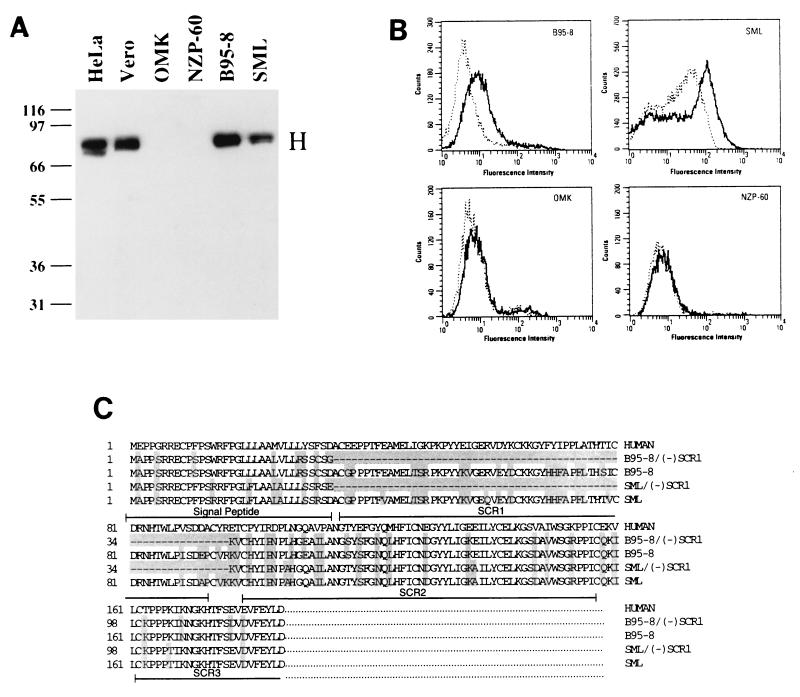FIG. 2.
Growth of the Edmonston strain of measles virus in New World monkey cell lines is impaired when SCR1 is deleted. (A) Human cervical carcinoma (HeLa), African green monkey kidney (Vero), owl monkey kidney (OMK), marmoset kidney (NZP-60), marmoset B (B95-8), and squirrel monkey lung (SML) cells were infected with the Edmonston strain of measles virus which had previously been adapted for growth in Vero cells. The cells were inoculated with 5 PFU of virus per cell, and infections were allowed to proceed for 72 h, after which the infected cells were subjected to immunoblot analysis with monoclonal antibodies to measles virus H protein. Viral protein synthesis was not observed in the OMK and NZP-60 cell lines, but measles virus H protein was detected in B95-8 and SML cells. (B) FACScan analysis was performed on B95-8, OMK, SML, and NZP-60 cells with an antibody to the SCR1 domain of the moustached tamarin (Saguinus mystax) and detected with goat anti-rabbit antibodies which had been conjugated to fluorescein isothiocyanate (solid line). The cells were also tested with rabbit preimmune antisera (dotted line). Shifts in fluorescence were observed in B95-8 and SML cells but not in OMK and NZP-60 cells. (C) mRNA was extracted from B95-8 and SML cells, cDNA was prepared, and PCR products spanning the signal peptide, SCR1, SCR2, and SCR3 domains were prepared and sequenced. The predicted amino acid sequence is shown and was derived from three independent amplification reactions for each sequence. Both deleted and nondeleted forms of mRNA were present in the two cell lines.

